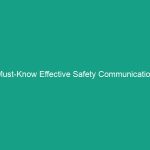Introduction
Good morning team! Today, we’re going to talk about a crucial aspect of Workplace Safety that affects many of us: harness Safety. Our discussion will focus on Essential Harness Guidelines: Avoid These Critical Safety Risks Today. Understanding these guidelines is vital not just for compliance, but for ensuring your safety and the safety of your colleagues while performing tasks at heights.
Why is this important? Falls are one of the leading causes of workplace injuries and fatalities. By following proper harness guidelines, you can significantly reduce the risk of accidents and ensure a safer work Environment for everyone.
Understanding Essential Harness Guidelines
So, what exactly do we mean by Essential Harness Guidelines? These guidelines encompass the Best Practices for using harnesses and other Fall Protection equipment effectively. They are designed to help you understand how to properly wear, use, and maintain your harness to prevent accidents.
Many employees believe that simply wearing a harness is enough to prevent falls. However, that’s a common misconception. Using a harness incorrectly or failing to inspect it before use can lead to serious injuries. It’s essential to recognize that proper Training and adherence to guidelines are just as important as the equipment itself.
Key Hazards, Risks, and Safety Considerations
Let’s discuss some of the specific Hazards and risks associated with harness use:
- Improper Fit: A harness that does not fit properly can lead to falls. Ensure that your harness is the right size and adjusted correctly.
- Equipment Failure: Harnesses can wear out over time. Always check for signs of wear and tear, such as fraying straps or broken buckles.
- Inadequate Training: Without proper training, employees may not know how to use a harness correctly, increasing the risk of accidents.
- Environmental Hazards: Working in areas with overhead obstructions or slippery surfaces can increase the risk of falls.
Ignoring these risks can lead to severe consequences, including permanent injuries or even fatalities. That’s why it’s crucial to stay vigilant and adhere to safety protocols.
Best Practices, Procedures, & Actionable Advice
Now that we understand the risks, let’s look at some Best Practices for using harnesses safely:
1. Proper Inspection
Before each use, inspect your harness thoroughly. Look for:
- Frayed or worn straps
- Damaged buckles
- Signs of corrosion or damage to metal parts
If you notice any issues, do not use the harness. Report it to your supervisor immediately.
2. Correct Usage
When putting on your harness:
- Ensure all straps are adjusted to fit snugly but comfortably.
- Make sure the dorsal D-ring (the attachment point on your back) is positioned correctly.
- Check that leg straps are not twisted and are secured properly.
3. Training and Refreshers
Participate in regular training sessions to stay updated on safety protocols. These sessions help reinforce your understanding of harness use.
4. Use of Additional Equipment
In addition to harnesses, make sure you are familiar with other fall protection equipment, such as lanyards and anchors. Each piece of equipment plays a critical role in ensuring your safety when working at heights.
5. Real-Life Example
Consider the case of an employee who fell while working on a roof. The harness was not inspected beforehand, and it failed due to wear and tear. This incident could have been prevented with proper inspection and adherence to our harness guidelines.
Regulations, Standards, and Compliance
Understanding the Regulations surrounding harness use is pivotal. The Occupational Safety and Health Administration (OSHA) has strict guidelines regarding fall protection. Here are some key points:
- Employers must provide appropriate fall protection systems, including harnesses, when employees work at heights of six feet in the construction industry.
- Employees must be trained to recognize Fall Hazards and how to use the fall protection systems provided.
Compliance with these regulations not only protects you but also helps the company avoid penalties and maintain a safe work environment.
Employee Engagement & Discussion
Now, let’s take a moment to discuss:
- What safety challenges have you encountered related to harness use?
- How can we improve our safety practices regarding harness inspections and training?
Your input is invaluable, and together we can create a safer workplace.
Conclusion & Key Takeaways
In conclusion, adhering to Essential Harness Guidelines is critical in avoiding safety risks associated with falls. Remember:
- Always inspect your harness before use.
- Use your harness and other fall protection equipment correctly.
- Stay educated and participate in training sessions.
By prioritizing safety and following these guidelines, we can help ensure our workplace remains safe for everyone. Thank you for your attention today, and let’s continue to commit to safety every day!


